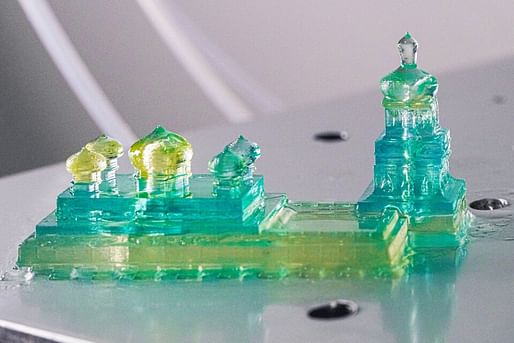

Research engineers at Stanford University have developed a 3D printing method that is "five to ten times faster than the quickest high-resolution printer currently available and is capable of using multiple types of resin in a single object." The team's design research and findings were recently published in Science Advances on September 28, 2022. This work allows for the potential use of thicker resins with "better mechanical and electrical properties," reports Laura Castañón of Stanford News.
This breakthrough is a major step forward from the current limitations of the 3D printing process, which can be timely and requires specific materials that can mainly only be used once at a time.
"This new technology will help to fully realize the potential of 3D printing," said Joseph DeSimone, corresponding author on the paper and the Sanjiv Sam Gambhir Professor in Translational Medicine and professor of radiology and of chemical engineering at Stanford. "It will allow us to print much faster, helping to usher in a new era of digital manufacturing, as well as to enable the fabrication of complex, multi-material objects in a single step."
The new process advances a 3D printing method developed in 2015 by DeSimone and his team called continuous liquid interface production (CLIP). With CLIP, a "rising platform pulls an object from a thin pool of resin."
As per Stanford News, "The resin at the surface is hardened into the right shape by a sequence of UV images projected through the pool, while a layer of oxygen prevents curing at the bottom of the pool and creates a 'dead zone' where the resin remains in liquid form. The dead zone is the key to CLIP’s speed. As the solid piece rises, the liquid resin is supposed to fill in behind it, allowing for smooth, continuous printing. But this doesn’t always happen, especially if the piece rises too quickly or the resin is particularly viscous."
Due to this "dead zone," the researchers developed injection CLIP or iCLIP. Through this process, Castañón reports, "mounted syringe pumps on top of the rising platform add additional resin to areas where it’s specifically needed." Because the additional resin is added separately, iCLIP allows multiple types of resin to be added throughout the printing process. Each resin comes from its own syringe. The team tested iCLIP by printing with three different syringes filled with resin dyed in different colors. They were able to create models of well-known buildings from different countries in the color of each country’s flag.
The researchers are now developing a software to enhance the current method, thus allowing designers to have more control and make the printing process even quicker.
"A designer shouldn’t have to understand fluid dynamics to print an object extremely quickly," shared Stanford Ph.D. student in mechanical engineering and lead author of the paper, Gabriel Lipkowitz, with Stanford News. "We’re trying to create efficient software that can take a part that a designer wants to print and automatically generate not only the distribution network but also determine the flow rates to administer different resins to achieve a multi-material goal."
No Comments
Block this user
Are you sure you want to block this user and hide all related comments throughout the site?
Archinect
This is your first comment on Archinect. Your comment will be visible once approved.